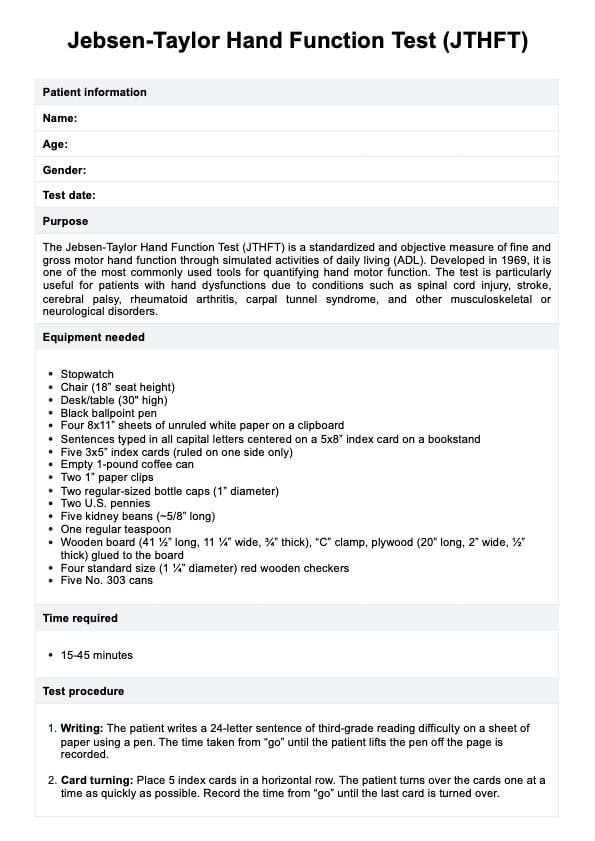The Jebsen-Taylor Hand Function Test (JTHFT) is an assessment tool that evaluates hand function through a series of timed tasks that simulate everyday activities.

Jebsen-Taylor Hand Function Test
Discover how our Jebsen-Taylor Hand Function Test template can streamline hand function assessments and improve patient care. Download now!
Use Template
Jebsen-Taylor Hand Function Test Template
Commonly asked questions
The test typically takes 15 to 45 minutes to complete, depending on the patient’s condition and the experience of the person administering it.
The test requires a stopwatch, writing materials, small everyday objects, checkers, empty and weighted cans, and a board for specific tasks.
EHR and practice management software
Get started for free
*No credit card required
Free
$0/usd
Unlimited clients
Telehealth
1GB of storage
Client portal text
Automated billing and online payments











